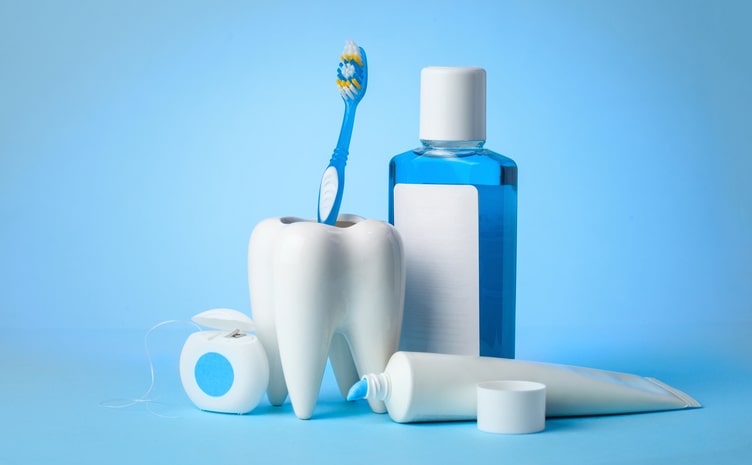Specialist Q&A , Health & Wellness , Dental Care
Smile Savvy: Your Top Dental Queries Answered!
Get expert tips on oral care essentials in this concise Q&A article from Dentalpro, covering everything from toothbrush choices to dental visit frequency.

You Ask, They Answer
Q: Should I use an electric or manual toothbrush?
A: When it comes to choosing between an electric or manual toothbrush, it ultimately depends on your personal preference and oral health needs. Both types of toothbrushes can effectively clean your teeth, but here are some factors to consider when making your decision:
i. Efficiency: An electric toothbrush has a vibrating or rotating head that helps to remove plaque and bacteria more efficiently than manual toothbrushes. Generally, electric toothbrushes reuire less effort and techniue compared to manual toothbrushes, therefore making them ideal for those with limited deterity or difficulty reaching certain areas of the mouth. They often feature built-in timers to ensure you brush for the recommended two minutes, and some even have pressure sensors to alert you if you’re applying too much force.
ii. Convenience and cost: Manual toothbrushes are generally more portable for travel and easily replaced. Electric toothbrushes come with charging units and batteries for them to function. Electric toothbrushes tend to have a higher upfront cost than manual toothbrushes. While manual toothbrushes are relatively inexpensive and easily replaced, electric toothbrushes require additional costs for replacement heads and batteries or charging units.
iii. Oral health conditions: Certain dental conditions may benefit from using an electric toothbrush. or eample, if you have braces, an electric toothbrush can be helpful in removing plaque from hard-to-reach areas.
Ultimately, the most important factor in maintaining good oral hygiene is the technique and regularity of brushing, regardless of the type of toothbrush you choose.
Q: How many times a day should I brush my teeth?
A: The recommended frequency to brush your teeth is at least twice a day – once in the morning and once before bed.
Brushing your teeth thoroughly for about two minutes each time using a soft-bristled toothbrush and fluoride toothpaste can help effectively clean your teeth and prevent dental issues. Brushing after meals is encouraged, but to avoid damaging your teeth, wait at least 30 minutes after a meal and one hour after consuming acidic foods or drinks before brushing your teeth.
Q: Should I also floss and use a mouthwash after brushing to keep the teeth healthy?
A: Yes, flossing and using mouthwash have different benefits that complement brushing to improve your oral hygiene.
Flossing helps to remove plaque and food particles from between your teeth and along your gumline where your toothbrush may not reach. This can prevent tooth decay, gum disease, and bad breath. Flossing also stimulates your gums and improves blood ow, which help prevent inammation and infection. ou should oss at least once a day, preferably before brushing, to clean the interdental spaces.
Mouthwash helps to kill bacteria in your mouth and freshens your breath. Some mouthwashes contain uoride, which can strengthen tooth enamel and prevent tooth decay. Mouthwash can also be helpful for reducing plaque, gingivitis, and gum irritation.
Q: How often should I see a dentist for scaling and polishing?
A: The recommended frequency for scaling and polishing may vary depending on individual factors, such as oral health, previous dental history, and personal habits. However, as a general guideline, scaling and polishing every six months is typically recommended for adults.
Regular scaling and polishing help maintain good oral hygiene and prevent the buildup of harmful bacteria by removing plaque and tartar buildup, which can contribute to tooth decay, gum disease, and other dental issues.
Dentalpro
The article was produced by the team at Dentalpro, a dental specialist centre in Kuala Lumpur.
Article Source: Saving the Eyesight of a Billion People (Issue 6)
Related Articles
Health & Wellness
How to Deal with Obesity & Diabetes?
The prevalence of obesity in the world have continued to increase significantly. It is estimated by WHO that 39% of adults aged 18 years and over were overweight in 2016, and 13% were obese.
Read moreHealth & Wellness
Ascensia Diabetes Care adds expert judging panel
During the Diabetes Technology Meeting in Bethesda, MD, USA, Ascensia Diabetes Care announced two new judges that have been added to the judging panel for the Ascensia Diabetes Challenge and expands competition into more regions
Read moreHealth & Wellness
A teeth whitening formula restores natural colour
The Smile Bar restores teeth to their natural off-white colour
Read moreLatest Articles
Medical Care
Clinical Exercise Physiologist (CEP): The Emerging of Exercise is Medicine
How Exercising can be a Medicine
Read moreMedical Care
Reversing type 2 Diabetes: Embracing Hope and Determination
Experience the remarkable journey of Ash and his grandfather Atok as they conquer type 2 diabetes through unconventional methods, showcasing the power of love and determination over adversity.
Read moreMedical Care
Bladder Cancer: What You Need to Know
Empower yourself with our comprehensive guide to bladder cancer. Explore symptoms, diagnosis, treatments, and supportive resources to safeguard your health.
Read more